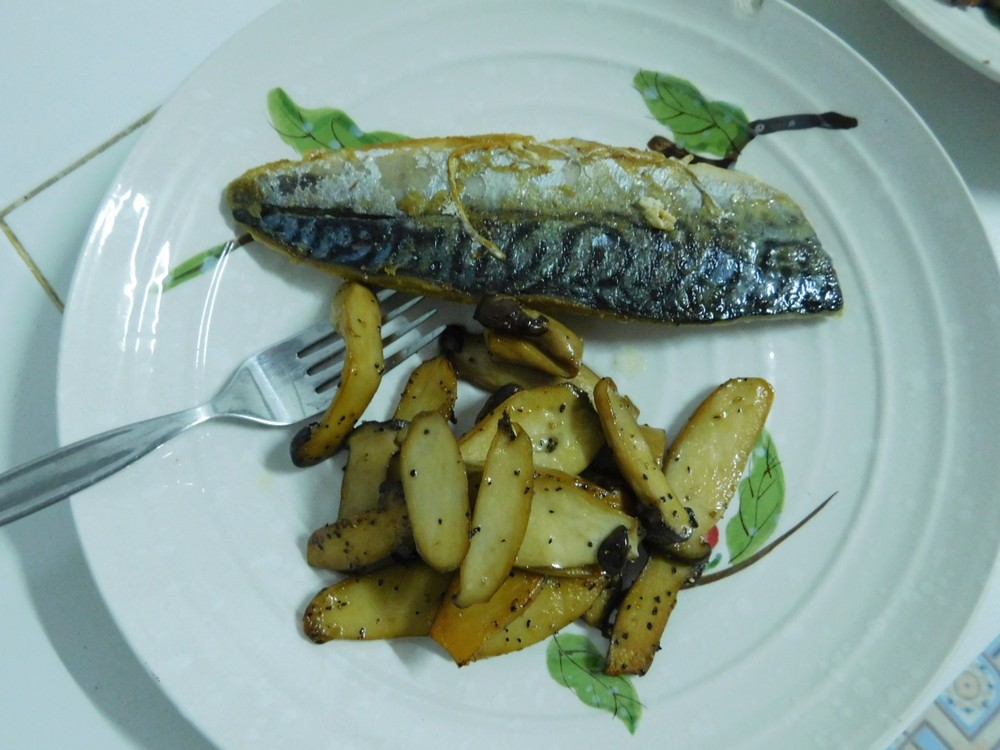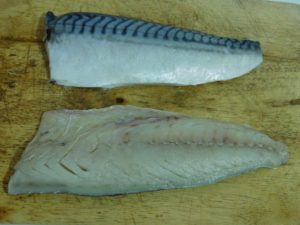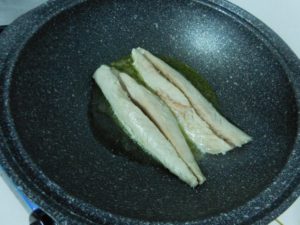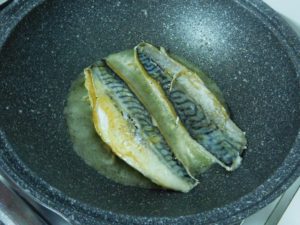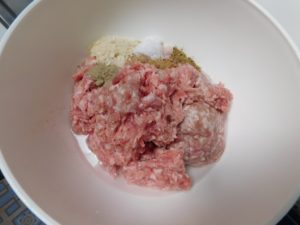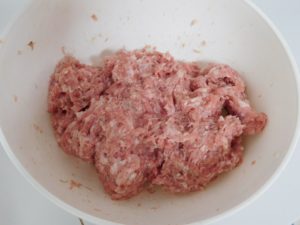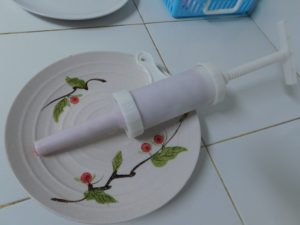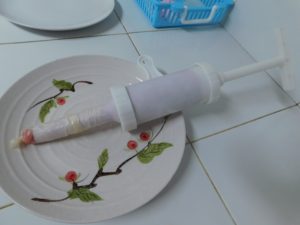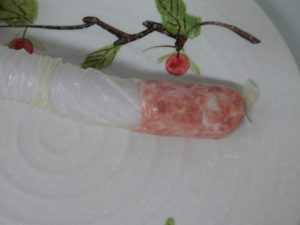
Archive for the ‘: ENGLISH’ Category
Sausage Sandwich
Now a true British Sausage Sandwich would be Cumberland or Lincolnshire sausages on a floured bap with ketchup or brown sauce. However, this being Thailand, floured baps are quite scarce in a province where there is very few westerners, but I do make some excellent Cumberland sausage so that part is possible for me. But, I am going to make these with a bit of a twist. Here is 3 versions for you to enjoy.
Ingredients
1st Version (Asian)
- 4 links Arabiki sausage, in Thailand, these are 4 links to a pack
- 2 slices wheat bread, toasted
- ketchup, or Kewpie mayo, as desired
2nd Version (American)
- 1 link Italian sausage
- ½ onion, sliced
- 1 hamburger bun, or white bread
- Cream cheese, softened
3rd Version (British)
- 3-4 thin links Cumberland sausage
- 1 hamburger bun
- ketchup, or HP brown sauce
Instructions
1st Version (Asian)
- Stab the sausages with a fork along the length, this prevents bursting. Heat a non stick pan with a teaspoon of oil, when hot, add the sausage and cook until browned.
- Toast the bread, add the sausage links to one slice, top with ketchup or Kewpie mayo as desired.
- Top with the second slice of toasted bread, cut in half, enjoy.
2nd Version (American)
- Butterfly the sausage. Heat a non stick pan with a teaspoon of oil, when hot, add the sausage and cook until browned.
- In another pan, saute the onion until softened and starting to brown.
- Spread cream cheese on the top and bottom of the bun or on one side of each slice of bread. Place the sausage on the bottom of the bun or a slice of bread, top with the onion, top with the other half of bun or slice bread, enjoy.
3rd Version (British)
- Stab the sausages with a fork along the length, this prevents bursting. Heat a non stick pan with a teaspoon of oil, when hot, add the sausage and cook until browned.
- Add the sausage links to the bottom bun, top with ketchup or HP sauce as desired.
- Top with the other half of the bun, enjoy.
Notes
If making the Cumberland or Italian sausage yourself, this is a Low cost sandwich, if buying the sausage, this could be Fair to High priced per sandwich. I will mark this one as Fair priced for now.
Steak & Kidney Pie
This comes from a good friend and sounds like a good way to use pork kidneys. I look forward to making this. If you have never cleaned kidneys before, no worries, I have a shortcut to show you that as well. Link to the Shortcut is listed in the Recipe Notes section.
Equipment
- Oven
- Pie Dish
Ingredients
- 2 tablespoons vegetable oil
- 750 grams steak, cheapest cut you can find, diced, (1½ lb)
- 250 grams lamb kidneys, or pork kidneys, cleaned and diced, (8 oz), Shortcut
- 2 medium onions, diced
- ¼ cup all purpose flour, 30 grams if using a scale
- 3 cups beef stock, fresh or from powder, and as needed
- salt and pepper, as desired, to taste
- 1 dash Worcestershire sauce
- 300 grams puff pastry, sheet or ball, (10 oz)
- 1 egg, beaten
Instructions
- Heat the oil in a large non stick pan on medium high heat, when hot, brown the beef on all sides, work in batches if needed, not trying to cook through, just get most of it browned. Remove the beef and set aside.
- Same pan, add the kidney and brown on all sides, again, not trying to cook through, just brown it.
- When the kidney is browned, add the onion to the pan and saute for 3-4 minutes until the onion is soft.
- Return the beef to the pan and mix everything together, then sprinkle the flour in and stir to coat everything with flour.
- Pour in the beef stock and stir together, bring the heat to a boil then reduce to a simmer. Simmer uncovered for 1½ hours, stirring occasionally, If the liquid reduces to much, add stock as needed.
- Remove from heat, season with salt, pepper, and Worcestershire sauce as desired, stirring in and tasting. Set this aside and allow to cool completely.
- Preheat your oven to 220° C (425° F). Get out a pie dish.
- When the meat mixture has completely cooled, pour it into the pie dish.
- Roll out the puff pastry to just under 1/4 inch thick, use the rolling pin and transfer to the pie dish and cover the top and flute the edge. Brush the top with the beaten egg.
- Bake for 30-40 minutes or until the top is golden brown brown and puffed.
- Serve with mashed potatoes and vegetables for a complete, and filling meal.
Notes
I will price this next time I get beef, for now I will say fair cost per serving.
Shortcut: Pork Kidneys 101.
Variant: 1. Use pork kidneys in place of lamb kidneys.
Simple Fried Mackerel
Mackerel is an oily fish and is delicious without any sauces or special ingredients. This is the classic English way to prepare mackerel fillets with skin on. Three ingredients and about 2-3 minutes of cooking time is all that is needed. Overcooking mackerel will result in dry fish, so we do not want to do that.
Ingredients
- 2 mackerel fillets, skin on, pin bones removed
- salt, as desired
- olive oil, as needed
Instructions
- Here is my mackerel, these come frozen, two fillets to a pack, no bones are removed. First thing I did after this photo was remove the rib bones.
- Check the fillets and see if the pin bones have been removed, run a finger down the center line of each fillet, you will feel pin bones sticking up. Remove with needle nose pliers or just make an angled cut the length of the fillet, without going through the skin, on each side of the row of bones, then simply remove the strip of bones. Pat the fillets dry with paper towels. To make it easier to handle the fillets, cut each fillet in half crosswise, giving you 4 pieces, if desired.
- Heat 1-2 tablespoons of olive oil, I used ghee, in a non stick pan. When the oil is hot, season the flesh side of the fillets with salt as desired. Place the fillets in the pan skin side down, if the fillets are curling upwards, just use your fingers and hold them down flat for a few seconds to make sure the skin maintains contact with the pan (this ensures nice and tasty skin). Cook for 1-2 minutes depending on the thickness.
- Once the skin is crispy and golden brown, turn the fillets over and remove the pan from heat, let cook for 30 seconds to 1 minute.
- Serve skin side up immediately. Enjoy with sides of your choice.
Notes
I have frozen mackerel fillets in the freezer, don't know what I paid for them, not too much, but I will verify this when I go to Tesco in town again. For now I will say Low cost per serving.
English Bangers
English Bangers are simply English pork sausages. The banger part comes from cooking them and they pop occasionally, hence the bang. The beauty of making your own sausage, you know exactly what is in it, not strange chemical names, no preservatives. These are the perfect addition to mashed potatoes and a side peas, aptly named, Bangers & Mash. Link to the Shortcut is listed in the Recipe Notes section.
Equipment
- Sausage Stuffer
Ingredients
- 1 kilo ground pork, (2 lbs)
- 2¾ teaspoons salt
- ¼ teaspoon ground ginger
- ¼ teaspoon ground sage
- ⅛ teaspoon ground mace, or ground nutmeg
- ½ teaspoon white pepper powder
- ¼ cup bread crumbs, Shortcut
- ⅓ cup cold water
- sausage casings, your choice or natural hog or collagen
Instructions
- In a large mixing bowl, all all ingredients except the casings.
- Mix together with your hands.
- If using natural hog casings, salted or dry, follow the instructions on the package to prep them. If using collagen casings, use them dry.
- Stuff the casings with your preferred method, such as a sausage stuffer, a stuffer tube on a meat grinder, a hand held stuffer (my preference), or even a funnel.
- I use 28 mm (1.10 inches) collagen casings. To prep them, I tie a knot on the end then pull it out to 7 1/2 inches and cut it off, use a pin or toothpick and poke a hole near the knotted end, this allows air to escape when you start filling, and repeat for 10 or so casings. The following are the procedure I use when I use my manual hand held stuffing device.
- This is a common hand held manual sausage stuffer, disregard that handle, it is absolutely worthless as you need to hold the device by the tube end so you can release the casing as you stuff. First thing you do is is using the correct tube size for the casings you are using and add that to either end of the device with the retaining ring. Then spin the retaining ring on the plunger all the way to the front of the plunger (opposite end of the t-handle). Use a spoon and fill the hopper with the meat mixture, then screw on the plunger. Twist the t-handle until the tube is filled with meat. Remove the plunger, add a little more meat, about 1/2 inch from the top, then spin the retaining ring to the front again, then screw the plunger onto the device. This shows the stuffer is full and ready for use. If any meat comes out of the tube, just scrape that off with a spoon and return that the bowl with the meat.
- Take a casing you prepared and open up the end and slide that onto the tube all the way.
- Pick up the device and hold it with either hand by the end of the tube, you will release the casing as you screw the plunger in with your other hand. Now when you screw the plunger in, keep in mind, you are not blowing up a balloon, so don't over stuff the casing, you will get the feel for this after 1-2 tries, it is very easy.
- Screw the plunger in and slowly let out some casing as the casing fills, important to keep the end of the tube in the meat mixture, this is to prevent you from making air bubbles. The tube here is about 1/4 inch into the meat.
- Just keep turning the plunger in and letting casing out, when you get to about ¾ of an inch from the end of the casing, simply turn the plunger handle back 1 turn, the pinch off the meat at the end of the tube. Place the sausage on a plate. I can get two sausages from one filling of the stuffer. Repeat the steps of filling and stuffing until all the meat mixture is used.
- Now this step requires two people. Pick up a sausage, pinch the open end down to the meat, get the air out, and twist two times, have another person tie with a string. Repeat for all of the links.
- Trim off the excess string and casing, then use a toothpick or needle, and poke 3 holes in each sausage, one on each end, one in the middle, this reduces the possibility of it "banging" or popping during cooking. Sausages are now ready to be pan fried or frozen. Once cooked, simply snip off the strings before serving.
- To serve, simply pan fry and pair with mashed potatoes and brown gravy.
Notes
For the pork, ground pork at Tesco is 109 Baht/kilo or $3.30 for 2 lbs. I made 10 links using 28 mm (1.10 inches) casings. I sampled 6 of 10 sausages, average is 103 grams (3.6 ounces) per sausage. Figuring 2 sausages per serving is 66 cents per serving. Excellent value compared to store bought.
Shortcut: Bread Crumbs.



